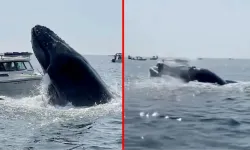Eight of the world's 10 highest peaks are in Nepal, where mountaineering tourism is a major business. The short Everest climbing season usually comes in May, weather permitting, but some daredevils attempt riskier winter ascents.
It is estimated that more than 330 people have died trying to reach the summit of Everest, with around 200 bodies left on the slopes because lowering the deceased down was deemed too risky.
Making the chips mandatory follows one of the deadliest years for climbers of the world's highest mountain, when in 2023 12 people were confirmed dead on its windswept, icy slopes and five others were declared missing.
The satellite-linked chips will be leased from the government as part of the permitting process for climbers. The devices, sewn into the climber's clothing, will be returned after the descent from the 9-kilometer-high mountain.
The first of these was completed in 1980, almost forty years after Edmund Hillary and Tenzing Norgay's first successful summer summit.
However, Everest is far from being the most dangerous mountain to climb, with a fatality rate of around six in 100. Of the three climbers who tried to reach the 8,000-meter-high Annapurna peak, only one survived to tell the tale. For K2 on the China-Pakistan border in Nepal, the rate is around one in four, making it the second most dangerous mountain in the world and also the second highest.
Europe's highest mountains reach only half the height of those in the Himalayas, while some, such as Mont Blanc, the Matterhorn and the Eiger, are extremely tricky and dangerous climbs, the last being the dizzying setting of the Eiger Sanction in Clint 1975.















